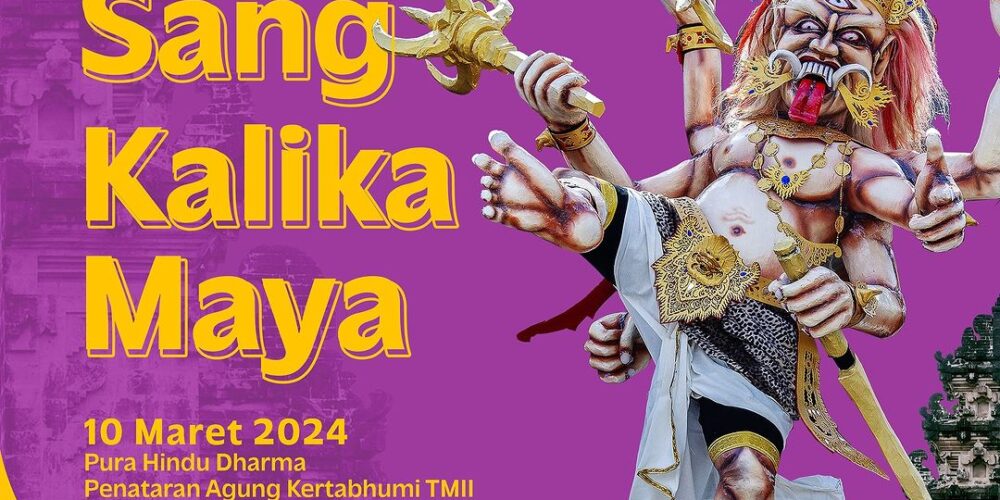
Welcoming Nyepi Day with the Vibrance of the Ogoh-Ogoh Parade
Welcoming Nyepi Day with the Vibrance of the Ogoh-Ogoh Parade

Hi, Explorer Friends!
Did you know that each year, just before Nyepi Day, the island of Bali comes alive with color, joy, and a powerful sense of community? This is because the Balinese people celebrate the Ogoh-Ogoh Parade as part of their preparations for Nyepi, the Hindu Day of Silence that marks the Balinese Saka New Year.
Ogoh-ogoh are towering effigies crafted from lightweight materials, such as bamboo, paper, and styrofoam. These intricate and imaginative sculptures represent mythical creatures from Balinese folklore—giants, deities, and fantastical beasts. Each ogoh-ogoh carries deep symbolic meaning, often embodying evil forces, inner conflict, or societal issues that the community seeks to cast out.
The parade begins in villages across Bali at sunset. Local youth carry their ogoh-ogoh through the streets in grand procession, accompanied by traditional gamelan music, dancing, and chants. With torchlight flickering and firecrackers popping, the Ogoh-Ogoh Parade creates a vibrant and exhilarating spectacle.
For the Balinese, the true purpose of this ritual is to purify the universe of negativity and disorder, ushering in the new year with a cleansed and sacred spirit. At the end of the parade, the ogoh-ogoh are ceremonially destroyed in a ritual known as Tawur Kesanga, where the effigies are set ablaze as a symbol of purification.
But the Ogoh-Ogoh Parade is more than just a celebration, it’s a deeply rooted cultural tradition. It serves as an opportunity for the Balinese people to showcase their rich heritage, pass down ancestral customs to the younger generation, and strengthen the bonds within their communities. For visitors, it offers a powerful glimpse into the cultural soul of Bali and a chance to share in the festive spirit and communal joy.
Can’t make it to Bali? You can still enjoy the Bali atmosphere right here at Taman Mini Indonesia Indah (TMII)! Visit the Balinese Pavilion, where you’ll be greeted by the iconic Candi Bentar—a traditional split gateway. Explore traditional Balinese house compounds designed in harmony with the philosophical concept of Tri Hita Karana. Discover Balai Rangki, where ceremonial items are stored and religious rituals are performed. And don’t miss the Aling-Aling Hall, located behind Candi Gelung, which is traditionally believed to ward off evil spirits.

Isn’t the Bali Pavilion at TMII amazing? The atmosphere truly captures the authentic vibes of strolling through Bali itself! So, what are you waiting for, Explorer Friends? Book your tickets and find more information at www.tamanmini.com. See you there!
Related Articles
TMII to Host the Inaugural Pradana Nitya Budaya TMII Award in Celebration of Its 50th Anniversary
Jakarta, April 11, 2025 – In anticipation of its 50th golden anniversary on April 20, 2025, Taman Mini Indonesia Indah (TMII), in collaboration...
Ogoh-Ogoh Parade Returns to TMII to Celebrate Nyepi 2025
In celebration of Nyepi Day and the Saka New Year 1947, Taman Mini Indonesia Indah (TMII) will once again host the vibrant Ogoh-Ogoh Parade...
TMII and Directorate General of Buddhist Community Guidance Sign MoU for Religious Activity Implementation
Jakarta, February 21, 2025 – Taman Mini Indonesia Indah (TMII) and the Directorate General of Buddhist Community Guidance of the Ministry of Religious Affairs of the Republic of Indonesia signed...
A Fun-Filled Weekend with Sal Priadi at TMII!
TMII Lokomotif Plaza was filled with thousands of visitors on the afternoon of Saturday, February 22, 2025, during the BTN in Love Senandung Sore 1.0 event. Featuring renowned Indonesian musician...




